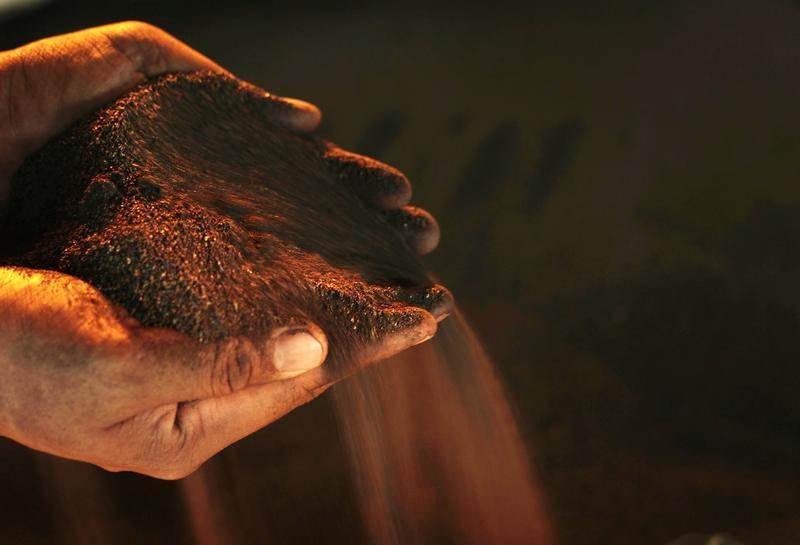(The opinions expressed here are those of the author, a columnist for Reuters.)
By Clyde Russell
LAUNCESTON, Australia, Feb 22 (Reuters) - - One of the problems for embattled resource companies is that the legislative environment in which they exist is often no longer reflective of the reality of the current, or likely future, markets in which they compete.
In other words, government policymakers quite often have laws, taxes and regulations designed for a bull market when a bear market is in place, and vice versa.
While it's easy to have a shot at politicians, in their defence, it can be the case that by the time they manage to go through the protracted processes of introducing new rules and regulations, the situation they envisaged has been substantially altered.
Indonesia's minerals sector is a good recent example, but not the only one, of how even policies that were relatively well designed and had reasonable aims can backfire because the market has changed.
At the start of 2014 Indonesia implemented rules banning the export of unprocessed metal ores in a bid to encourage the construction of smelters.
At the time Indonesia was the world's top exporter of nickel ore and China's biggest supplier of bauxite, the mineral that is the source of aluminium.
The new rules effectively stopped the export of those two minerals, although copper ore exports continued on an exemption granted on the basis that smelters would be built.
The rules were aimed at capturing more of the value of the minerals domestically by adding value prior to export, with the additional benefit of more employment and business investment.
Indonesia wasn't the first commodity producer to go down this path, but the problem this time was that the changes were implemented just as prices were about to plummet.
In effect, the ban on exports was designed with boom times in mind, not the bust that was just around the corner.
What happened was that Indonesia lost its position as a major supplier of those minerals, but consumers such as China had little difficulty in sourcing supplies from rivals, such as Malaysia for bauxite and the Philippines for nickel ore.
The planned investment in smelters has also been disappointing, with low commodity prices destroying much of the economic case for investment. of the smelters were also being financed by Chinese money, and this has become harder to source in recent months given the slowdown in China's economic growth and the balance sheet pressures of many companies in the commodity space.
It's therefore no surprise that Indonesia's mining minister said on Feb. 16 that the rules around the ban on exporting metal ores will be reviewed. exact nature of what may change is still to be determined, but it's likely that deadlines for the construction of smelters may be extended and exemptions given to allow for the export of unprocessed ores.
POOR TIMING
Another sector Jakarta sought to change to benefit the domestic economy was coal, where rules were introduced to force divestment of stakes in foreign-owned and developed mines to locals and to alter royalty arrangements.
Once again, there was an economic logic to these changes, but they came at a time when the coal price was sliding, a trend that has continued.
All that was achieved is that investing in Indonesian coal mines became a whole lot less attractive for foreigners, depriving the sector of capital for exploration and development.
In turn this has contributed to Indonesian coal producers falling behind Australian rivals in the race to cut costs and remain competitive, meaning that the Southeast Asian nation has been the one losing the most market share.
However, Australia isn't immune to policymaking that is out of kilter with reality.
One of the most controversial decisions of the Labor Party government that ruled from 2007 to 2013 was to introduce a tax designed to capture the so-called super profits of coal and iron ore mining companies.
At the time of its announcement, these companies were raking in cash from rising prices as the post-2008 recession spending boom ratcheted up, particularly in China.
However, the tax faced intense opposition from the mining companies, with backing from many of the workers, and was eventually watered down.
But by the time it became law, coal and iron ore prices had peaked in early 2011, and the super profits were no longer there, meaning it raised a fraction of what was forecast.
The tax died as part of a campaign promise by Tony Abbott, who won office for the Liberal Party in the 2013 general election.
What the wider public and the politicians failed to understand was that the mining tax was designed as a good times tax, one which captured strong profits but effectively disappeared when a downturn arrived.
The Labor government didn't anticipate the end of the commodity boom and spent the proceeds of the tax before they were collected, and the Liberal Party axed the tax, rather than suspend it and re-introduce it when the good times eventually return.
What is evident is that governments are generally too slow in responding to the dynamics of a shifting market, and spend too much time on grandiose pieces of big picture legislation and policies.
They would serve the sector better by focusing on the nitty-gritty of micro reforms and undertaking smaller projects, but with more haste and regular re-assessments.
(Editing by Christian Schmollinger)
